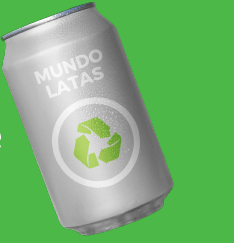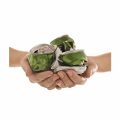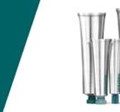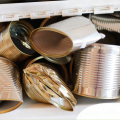Towards new recycling models: adopting a reusable packaging model, regardless of the material?
The infinite recyclability of aluminum is the core value proposition of can makers and is the solution that many smaller producers are looking at: moving away from plastic and embracing aluminum.
But, says Jesse Klein, a contributor to the U.S.-based Green Biz, this may not be the best alternative. “Many companies switching to aluminium packaging cite its recyclability as the main reason for the change.
They are betting on the high recycling rate of the material to reduce the impact of their packaging”. But why does Klein wonder if all the talk about aluminum recycling is true? Although reports indicate that the aluminum recycling rate is 80%, the total recycling rate for all aluminum is actually equivalent to 50% in the North American country.
According to a report by the consulting firm Metabolic, of approximately 90 million aluminum cans used each year in the United States, only half are recycled. The rest, according to the report, goes to landfills. “The recycling system is completely broken,” Michael Martin, founder of r.Cup told Green Biz. “Infrastructure needs to be addressed, and I don’t see that happening in the near future.
From my perspective, the resources required, the energy required, the negative impact of producing the material and then the broken recycling system ends up making [el aluminio] the least sustainable option compared to other options.”
The solution to this is to increase the recycling rate to reduce the environmental impact, but apparently according to some experts the change from plastic to aluminum of some companies is a somewhat hasty option because some relevant aspects are not taken into consideration. In this regard, Olga Kachook, senior manager of the sustainable packaging coalition at the nonprofit GreenBlue, notes that “most of the impacts of packaging occur during the sourcing and manufacturing phases. And that can be problematic. Not only this, transport also increases the impact of greenhouse gas emissions from aluminium over plastic, because it is heavier.
To do that, experts say, would require a full life-cycle analysis that compares the plastic version of a product with the aluminum version for each individual company to assess the full impact, and most smaller companies, Klein explains, don’t have the resources to do that.
Switching from one material to another may not be the solution to environmental sustainability.
What should be done, according to experts, is to adopt a reusable packaging model, regardless of the material. Or just look at what phase of production and distribution of a product is that the company can adapt a method and sustainable material and that leads to the least possible environmental impact.
One example mentioned in the Green Biz article is that of ThreeMain. ThreeMain, a U.S. subscription-based cleaning products company that recently converted to aluminum packaging from Trivium – a global leader in innovative and sustainable packaging solutions – has its customers purchase an aluminum bottle that they can refill with ThreeMain’s spouted plastic bags of cleaning products.
According to Lauren Simonelli, co-founder and product manager of the company, people are still using their original bottles two years later. ThreeMain offered subscribers the opportunity to exchange their plastic bottles for aluminum bottles when they switched to Trivium packaging.
According to Simonelli, the refill pouches use 80 percent less plastic than a traditional 16-ounce bottle and can be recycled through ThreeMain’s partnership with TerraCycle’s Zero Waste Box Program service.














